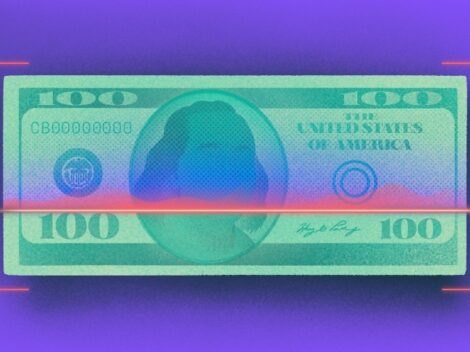Curious why Uber shares just fell off a cliff? In a word, earnings.
The American ride-hailing giant reported its second-quarter financial report today, just one day after key domestic rival Lyft reported its own. However, unlike Lyft’s results which included a revenue beat and slimmer losses than expected, Uber’s figures went the other way.
Subscribe to the Crunchbase Daily
Uber reported less revenue than expected and larger losses. That sent its shares down sharply.
The Results
Uber reported Q2 revenue of $3.17 billion, up just 14 percent from its year-ago quarter’s $2.79 billion in top line. Uber’s “adjusted net revenue” was even less impressive, growing just 12 percent from $2.57 billion in the year-ago second quarter to $2.87 billion in the most recent period.
Analysts had expected the company to report $3.36 billion in unadjusted revenue. Uber missed.
Turning to profit, it’s a weird quarter for Uber. The firm has IPO-related costs included in its operating results. However, even with that exception, the company’s unprofitability is comical. Uber’s operating loss for the quarter came to $5.48 billion. Its net loss for Q2 2019 was a slightly better $5.24 billion.
Uber’s GAAP net loss (its losses including all costs from the quarter) came to $4.72 per share. Investors had expected a loss of $3.12 per share in the quarter. Uber missed.
Finally on the core metrics, Uber’s adjusted profit was also sharply worse than it was in the year-ago. The company’s adjusted EBITDA (a profit metric that ignores a host of costs) came to -$656 million in Q2 2019. The firm’s year-ago result was a slimmer -$292 million. From the company’s slides:

Ouch
There was more bad news. Uber’s ride-hailing business is effectively not growing, even on a year-over-year basis. Indeed, in the second quarter of 2019 Uber’s ride-hailing business expanded just 2 percent compared to the year-ago quarter, growing from $2.29 billion to $2.35 billion. Uber Eats revenue grew rapidly, expanding 72 percent from $346 million in the year-ago quarter to $595 million in Q2 2019.
Notably, those results came from Uber’s ride-hailing gross bookings (the value of all rides taken on Uber’s platform) growing 20 percent and Uber Eat’s gross bookings (the value of all food orders that flowed through Uber’s platform) epxanding 91 percent. Therefore Uber’s gross bookings’ growth could be decoupling from its revenue expansion in a way that could spook investors.
Finally, Uber’s contribution profit — a gross margin-ish metric that accounts for individual business units covering their revenue costs — from its so-called “core operations” was just $220 million in Q2 2019. That’s off 40 percent from its Q2 2018 result of $369 million.
The Context
Lyft’s earnings were a surprise win for the company, and we wrote that perhaps the company would bolster other firms in the space. We already know that ride-hailing firms like Didi, Go-jek, and Grab are having no trouble raising venture capital dollars as they barrel toward becoming the ‘super-apps’ of their respective regions. When we last covered that trio, we explained their massive capital demands (and subsequent successful raises) by using Uber as an example. Uber’s staggering losses today remind us that ride-hailing is an expensive path, so it makes sense that the crowd it competes with is looking to raise as much as they can while they still have the option.
Uber shares are off 10 percent as I finish this short post. Equity in the company is now worth just $38.50 per share, sharply under its $45 per-share IPO price. More in the morning when the dust settles.
Illustration: Li-Anne Dias.

Stay up to date with recent funding rounds, acquisitions, and more with the Crunchbase Daily.









![Illustration of stopwatch - AI [Dom Guzman]](https://news.crunchbase.com/wp-content/uploads/Halftime-AI-1-300x168.jpg)
67.1K Followers